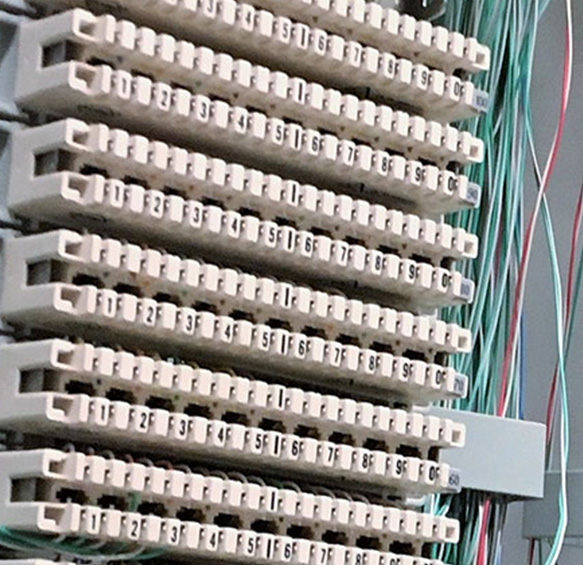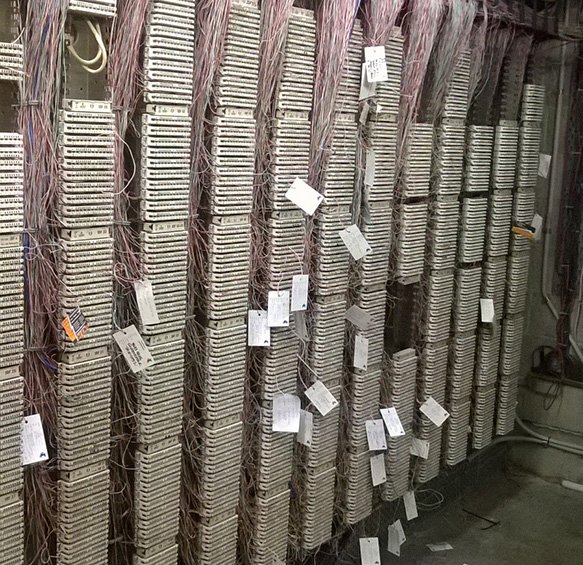Jumpering
Intellectually different
A-B Jumpering
A-B jumpering is the process of creating an electrical circuit of copper wire between the two “sides” of the terminal block in your MDF.
You will have either the (old) soldered terminal MDF block or the (new) KRONE punch-down terminal module within your MDF box or room at your premises.
Terminal blocks are also referred to as modules. Main Distribution Frames or MDF’s.
What do they do & who is responsible?
If your office is in a shared building or you live in an apartment, unit or villa then your phone line is most likely connected to your carrier’s network via a Main Distribution Frame or MDF. If you live in a freestanding house, then your is most likely connect directly to the carrier’s network.
Main Distribution Frames (MDF’s) are the point in your building where the incoming lines from Telstra or other service provider terminate. From this point the phone lines in the building become the responsibility of the Strata Title owners. The MDF connects the independent units or townhouses to the main carrier lines from one central location.


A-B Jumpering
A-B jumpering is the process of creating an electrical circuit of copper wire between the two “sides” of the terminal block in your MDF.
You will have either the (old) soldered terminal MDF block or the (new) KRONE punch-down terminal module within your MDF box or room at your premises.
Terminal blocks are also referred to as modules. Main Distribution Frames or MDF’s.
What do they do & who is responsible?
If your office is in a shared building or you live in an apartment, unit or villa then your phone line is most likely connected to your carrier’s network via a Main Distribution Frame or MDF. If you live in a freestanding house, then your is most likely connect directly to the carrier’s network.
Main Distribution Frames (MDF’s) are the point in your building where the incoming lines from Telstra or other service provider terminate. From this point the phone lines in the building become the responsibility of the Strata Title owners. The MDF connects the independent units or townhouses to the main carrier lines from one central location.

The MDF is usually found in a secure box or room that can be accessed by our Qualified and experience technicians. Often your landlord or building manager will be able to provide a key (or other access) to the MDF when our technicians are booked to connect you.
A modern MDF looks like this, if yours doesn’t you may want to have it updated to avoid loss of signal. This one also has a central filter/splitter for ADSL. MDF’s not only provide a central point for all of your phone lines in the building, but they also provide ADSL services on the same copper wires.
Some people have problems with their ADSL due to a number of reasons, including distance from the exchange and quality of MDF. ADSL speeds can be improved remarkably by installing what is know as a central ADSL filter/splitter.
This is a common MDF that services an apartment building, residential unit block or commercial complex. The telco provider ‘tags’ your line once it is connected to the network so that your private technician can ‘jumper’ the network line to your individual premises.
Your MDF could also look like this one. This is a Lead Solder MDF which is more commonly found in older buildings whose MDF has not been updated to a KRONE punch-down terminal module.
Your MDF may be housed in a locked cabinet, similar to this one or it may be located in a secure room. Your landlord or building manager will know the location of the MDF and be able to provide access to your technician. We recommend that you discuss accessing the MDF with your landlord or building manager in advance of your technician arriving to ensure access is available.
-In multi-story buildings a secondary MDF, called an IDF, is usually located on each floor. The IDF distributes lines for that particular floor of the building to each residence or business. The white cables seen below connect the IDF to the MDF, while the blue cables directly connect to the individual lines in your home or office.


Your MDF could also look like this one. This is a Lead Solder MDF which is more commonly found in older buildings whose MDF has not been updated to a KRONE punch-down terminal module.
Your MDF may be housed in a locked cabinet, similar to this one or it may be located in a secure room. Your landlord or building manager will know the location of the MDF and be able to provide access to your technician. We recommend that you discuss accessing the MDF with your landlord or building manager in advance of your technician arriving to ensure access is available.
-In multi-story buildings a secondary MDF, called an IDF, is usually located on each floor. The IDF distributes lines for that particular floor of the building to each residence or business. The white cables seen below connect the IDF to the MDF, while the blue cables directly connect to the individual lines in your home or office.
